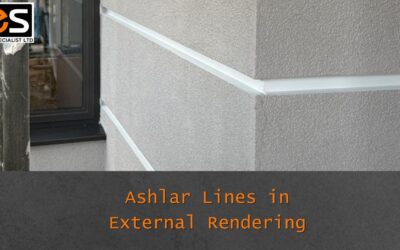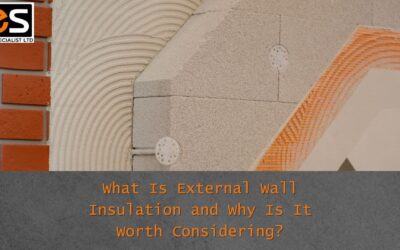Effective home insulation is a cornerstone of modern construction. A well-insulated property reduces energy consumption, lowers carbon emissions, and cuts down on heating and cooling costs. With rising energy prices and increasing awareness of environmental impacts, choosing the right insulation material is more important than ever.
When it comes to achieving exceptional thermal efficiency in minimal space, aerogel insulation is setting new industry standards. Originally engineered for space exploration, this ultra-lightweight material boasts the lowest thermal conductivity of any other insulation material, along with remarkable water resistance and fire safety. Now, it’s making its way into UK homes as a premium choice for new builds and retrofits.
In this blog, we’ll explore everything you need to know about aerogel insulation for walls: its composition, key benefits, practical applications, and why it’s considered a game-changer in the world of energy-efficient construction.
Content Page
- Aerogel Insulation: High-Performance Wall Insulation Solution
- Key Benefits of Aerogel Insulation
- Applications of Aerogel Insulation
- Why Choose Aerogel Insulation?
Aerogel Insulation: High-Performance Wall Insulation Solution
Aerogel is an incredibly lightweight and highly effective insulation material. It is created by removing the liquid component from a gel, resulting in a solid structure composed of up to 99.8% air. This makes aerogel one of the most efficient insulating materials, offering exceptional thermal resistance in an ultra-thin layer.
Its unique structure is packed with countless tiny air pockets that act as barriers to heat, preventing warmth from escaping in the winter and keeping your home cooler in the summer. Unlike traditional insulation materials, aerogel delivers high-performance thermal efficiency without adding bulk to your walls, making it particularly suitable for properties where space is limited.
The most commonly used type for insulation is silica aerogel. Known for its exceptional thermal properties, silica aerogel is transparent, lightweight, and highly effective at minimising heat loss. Its slim profile and efficiency make it ideal for external wall insulation (EWI), benefiting both modern and historic buildings.
Key Benefits of Aerogel Insulation
Aerogel is revolutionising the construction industry. Here’s why it’s the insulation material of the future:
High Porosity and Low Density
Aerogel’s structure is made up mostly of air, which creates thousands of tiny pockets that block heat transfer. This lightweight composition not only provides top-tier insulation but also keeps additional weight off your building.
Exceptional Thermal Performance
With a thermal conductivity as low as 0.013 W/mK, aerogel is one of the most effective insulators available. Its high efficiency means you need less material to achieve optimal insulation, perfect for projects where space is limited.
Water-Resistant and Breathable
Aerogel’s hydrophobic nature repels water, preventing dampness and mould growth. Despite this, it remains breathable, allowing water vapour to escape and helping to maintain healthy indoor air quality.
Fire Resistant
Aerogel is non-combustible and highly heat-resistant, adding an extra layer of fire safety to your home. It meets strict fire safety standards, providing long-term protection.
Space Efficiency
Its ultra-thin profile is perfect for tight spaces, eliminating the need for bulky traditional insulation materials. This makes aerogel an ideal choice for retrofits and new builds where every inch of space matters.
Applications of Aerogel Insulation
Aerogel’s versatility and outstanding properties make it suitable for a range of applications:
1. Modern Construction Projects
Ideal for new builds where space and energy efficiency are top priorities. Its slim form factor allows for better thermal performance without sacrificing internal space. Key areas include:
- Wall cavities
- Loft spaces
- Roof insulation
2. Retrofitting Historic and Listed Buildings
Traditional insulation methods are often too bulky for older, listed properties. Aerogel can be applied internally, preserving the building’s aesthetic while enhancing its thermal efficiency. Its breathability also prevents moisture build-up, which is crucial for heritage properties.
3. Thermal Bridge Elimination
Aerogel is thin yet effective in reducing thermal bridging. It is perfect for insulating those tricky, heat-leaking areas like window reveals, door frames and balcony junctions.
4. Versatile Forms for Any Application
Aerogel is available in multiple forms to fit different needs:
- Blankets: Ideal for external walls and roofs
- Boards: Perfect for internal insulation
- Granules: Effective for cavity walls and tight spaces
- Coatings: Great for irregular or curved surfaces
Why Choose Aerogel Insulation?
When improving your home’s insulation, choosing the right material is important. Traditional options like mineral wool or EPS work well, but aerogel offers much better performance in a thinner layer. It’s a smart choice where space is limited, and high thermal efficiency is needed.
Aerogel is Ideal for Space-Saving Applications
Aerogel’s ultra-thin profile, just 10–20mm for substantial insulation, makes it perfect for properties where space is at a premium. Unlike bulky insulation, aerogel delivers top-tier thermal performance without compromising valuable interior or exterior space.
Aerogel Insulation is Perfect for Hard-to-Insulate Areas
Aerogel works especially well in areas where adding standard insulation can be difficult, such as around windows, doors, balconies, and corners. Thanks to its slim profile, it helps reduce heat loss in these spots without major changes to the building structure.
Future-Proofing Your Property with Aerogel Insulation
Opting for aerogel is an investment in the future. Its long-lasting properties mean fewer replacements, reduced maintenance costs, and ongoing energy savings. Plus, its hydrophobic and fire-resistant nature adds an extra layer of security to your home.
Preserving Architectural Integrity with Aerogel Insulation
In older buildings or properties in conservation areas, changes to the exterior are often limited. Thanks to aerogel’s thin profile, it can be applied inside without affecting the building’s original appearance, helping to improve insulation while preserving the character of the property.
Interested in Aerogel Insulation?
If you’re exploring insulation options for your home or commercial property, aerogel is worth considering, especially where space is limited or performance matters most. As experienced installers, we’ve worked with advanced insulation systems like aerogel and can help you decide if it’s the right fit for your project. Get in touch with us today.










